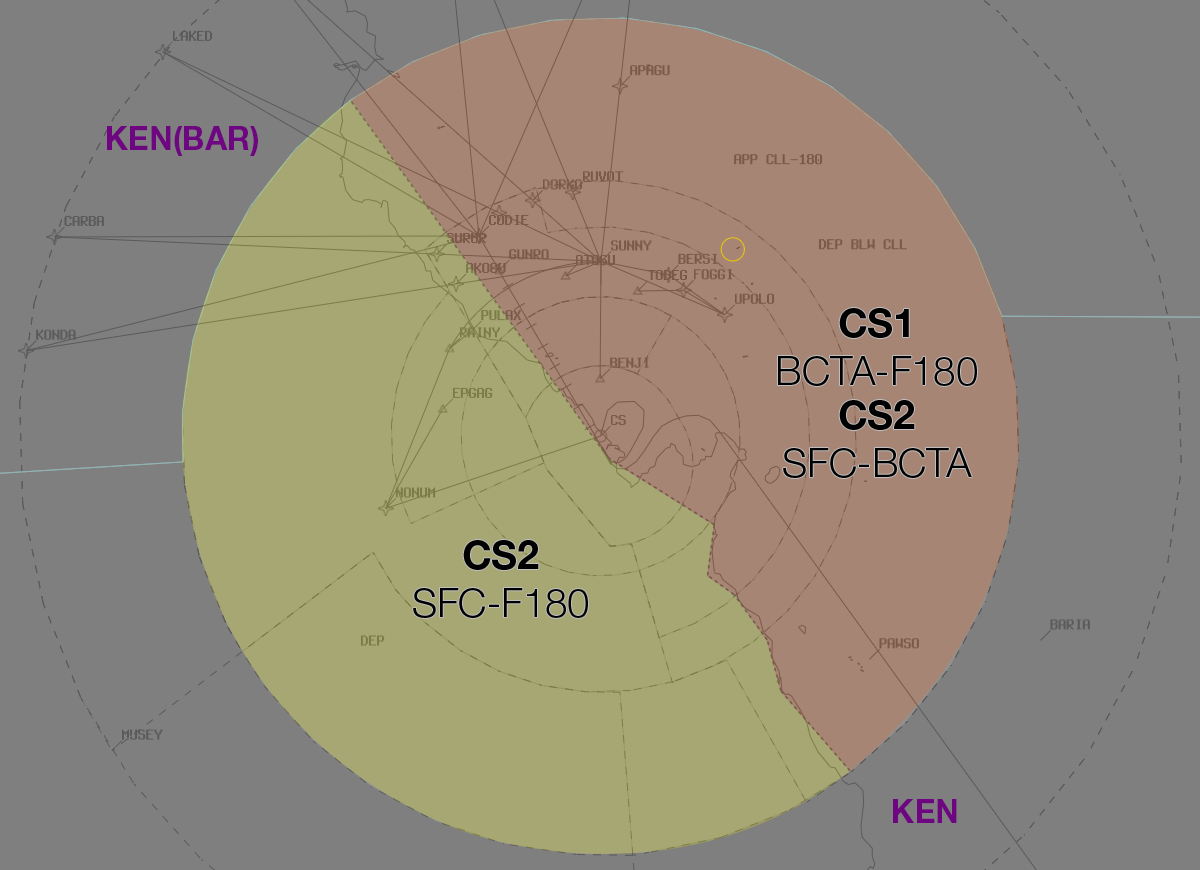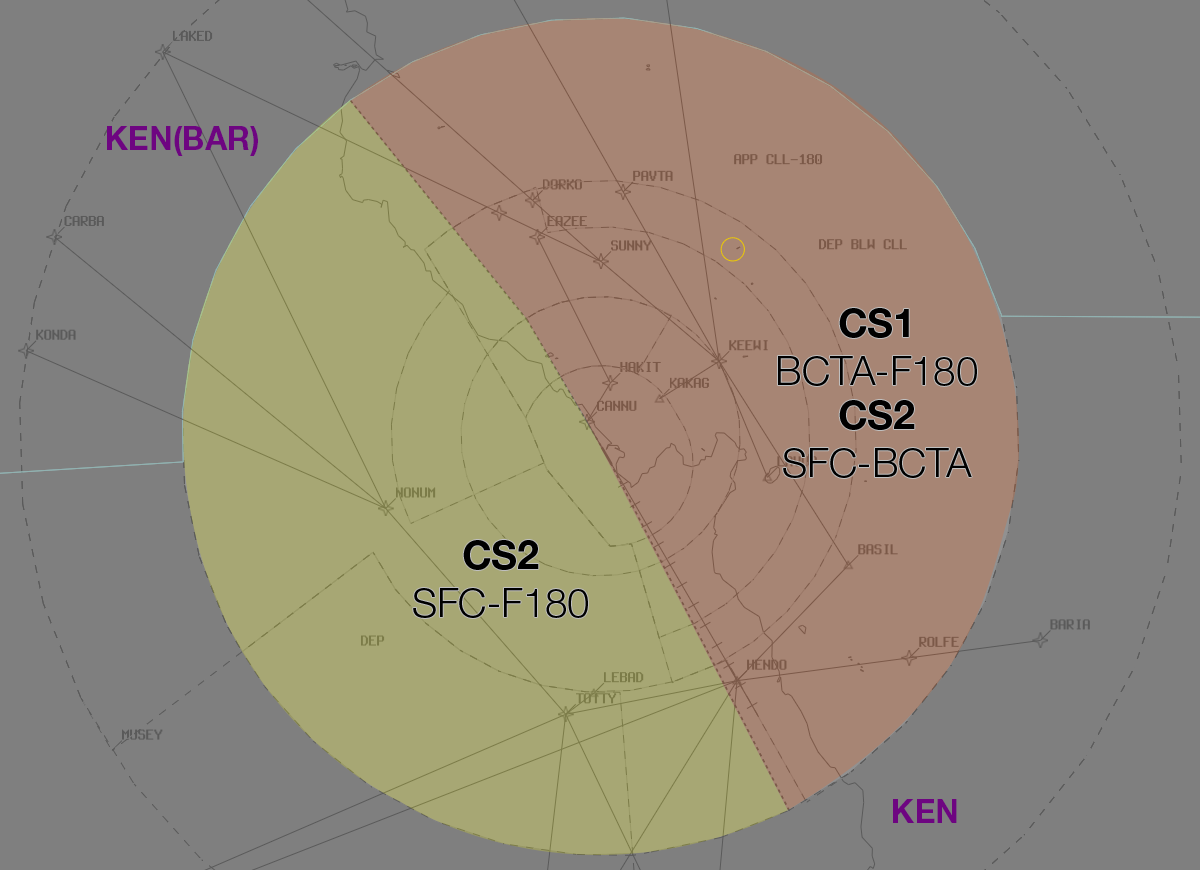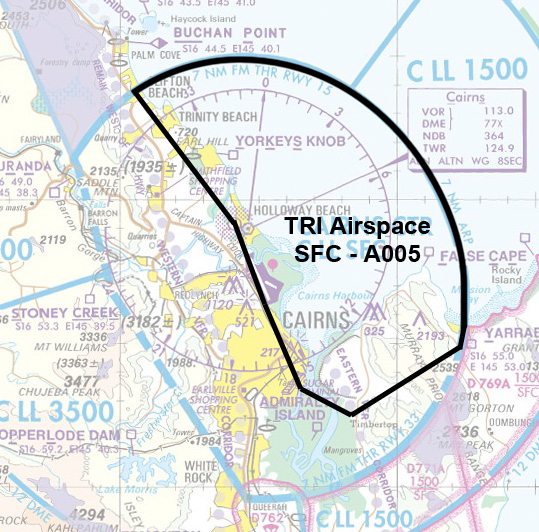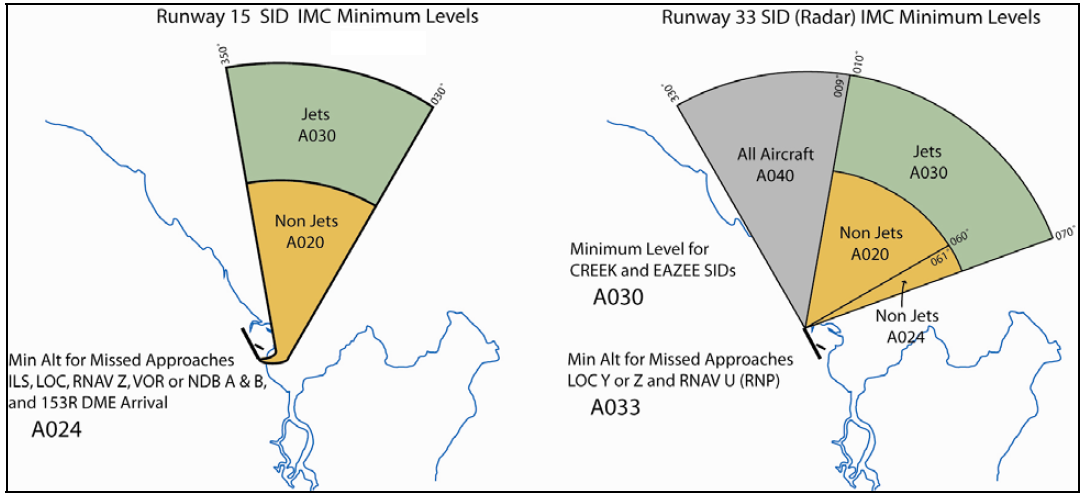Cairns TCU
Positions
| Name | ID | Callsign | Frequency | Login Identifier |
|---|---|---|---|---|
| Cairns Approach | CS1 | Cairns Approach | 118.400 | CS_APP |
| Cairns Approach† | CS2 | Cairns Departures | 126.100 | CS_DEP |
| Cairns Flow† | CSF | CS_FMP |
† Non-standard positions may only be used in accordance with VATPAC Air Traffic Services Policy
Airspace
The Vertical limits of the CS TCU are SFC to F180.
CS2 is responsible for Class G airspace within the Cairns TMA.
Airspace Division
The divisions of the airspace between CS1 and CS2 change based on the Runway Mode.
Runway 15

Runway 33

Note
Due to terrain shielding, Radar Coverage may be limited below A025 southwest of the Aerodrome
Trinity Release
During Daytime Hours Only CS ADC assumes the resposibility of the Trinity Airspace
Departing aircraft shall be transferred to TCU after ADC no longer has separation requirements.

Departure Procedures
IFR Departures
IFR aircraft shall be processed via one of the following SIDs:
a) RWY 15, Jets via AKROM: AKROM SID. Non-Jets via NONUM: NONUM SID
b) RWY 33, All Jets: EAZEE SID, Radar Transition
c) All others: CS (RADAR) SID
Note
Non-jet aircraft may be issued a Visual Departure.
Assignable Heading Range
| Runway | Heading |
|---|---|
| 15 | 350° to 030° |
| 33 | 330° to 070° |
Minimum IMC Levels
Lowest assignable level in IMC for assigned heading is:
| Runway | Jet | Non-Jet |
|---|---|---|
| 15 | A030 |
A020, between 350° to 030° |
| 33 | A040, between 330° to 009°. A030, all other headings |
A040, between 330° to 009°. A020, between 010° to 060°. A024, between 061° to 070° |

Arrival Procedures
Level Assignment
Inbound aircraft will be handed from Enroute to Approach assigned the standard assignable level. This section refers to further descent issued by the Approach controller.
Flow Control
It is the responsibility of the Flow to sequence all Cairns inbound traffic requiring the Runway. This includes aircraft arriving through the Class G airspace and released to ADC, unless ADC agrees to take the aircraft un-sequenced.
The minimum Flow spacing to the same runway shall be 3 minutes. Sight-and-follow or Flow spacing of less than 3 minutes must be approved by ADC.
TCU shall ensure changes to the sequence inside 36 Miles CS are coordinated with ADC. This responsibility may be delegated to Flow.
Flow instructions shall be based on Feeder Fix times. The following points are the FF to be used:
a) KONDA, CABRA, LAKED, DREWS, LOCKA, ZANEY, BARIA, FISHY, NORMA, BULOK
b) 40 Miles CS for all other tracks.
The following speeds apply from the Feeder Fix:
a) Jets – Maintain 250 KT
b) Others – Resume Normal Speed
c) As directed by Flow – Maintain ... KT
Approach Types
Approach Expectation shall be Expect Instrument Approach when:
| Time | Runway 15 | Runway 33 |
|---|---|---|
| Day | Conditions do not meet requirements for CS 360-R Creek Corridor Procedure – NAP2 (VMC conditions do not exist below A030) |
Conditions do not meet the requirements for KEEWI arrival visual procedure (VMC conditions do not exist below A030) |
| Night | All conditions | All conditions |
Coordination
ADC
Airspace
CS ADC is responsible for the Class C Airspace within the CS CTR SFC to A010.
Departures
'Next' coordination is not required from CS ADC for aircraft that are:
a) Departing from a runway nominated on the ATIS; and
b) Assigned the standard assignable level; and
c) Assigned a Procedural SID
Example
CS ADC -> CS TCU: "Next, ABC, runway 15"
CS TCU -> CS ADC: "ABC, Heading 030, Unrestricted"
CS ADC -> CS TCU: "Heading 030, Unrestriced, ABC"
The Standard Assignable level from CS ADC to CS TCU is the lower of A060 or the RFL.
Missed Approach
When weather conditions prevent the application of visual separation between a departure and a missed approach by tower:
a) ADC must advise TCU
b) Approach must limit departure headings to the following:
| Runway | Jet | Non-Jet |
|---|---|---|
| 15 | 030° | 030° |
| 33 | - | 330° |
Between CS FLW and CS ADC
FLW must advise ADC of any sequence changes within 36 Miles CS.
FLW must advise ADC of aircraft sequenced for Runway 30.
All requests for non-duty runway arrivals must be approved by ADC.
CS ACD
The controller assuming responsibility of CS ACD shall give heads-up coordination to the relevant CS TCU controller prior to the issue of the following clearances:
a) VFR Departures
b) Aircraft using a runway not on the ATIS
Example
CS ACD -> CS TCU: "ABC, Requesting clearance for a Northbound VFR Coastal departure at A035"
CS TCU -> CS ACD: "ABC, Cleared for a Northbound VFR Coastal departure, A035"
CS ACD -> CS TCU: "Cleared for a Northbound VFR Coastal departure, A035, ABC"
CS ACD: "ABC, Cleared for a Northbound VFR Coastal departure, A035, Squawk 3601"
ABC: "Cleared for a Northbound VFR Coastal departure, A035, 3601, ABC"
Enroute
Departures
Voiceless for all aircraft:
- Tracking via a Procedural SID terminus; and
- Assigned the lower of
F180or theRFL
All other aircraft going to KEN CTA must be Heads-up Coordinated by CS TCU prior to the boundary.
Example
CS TCU -> KEN: "JST789, with your concurrence, will be assigned F160, for my separation with ANZ12"
KEN -> CS TCU: "JST789, concur F160"
Arrivals
Voiceless for all aircraft:
- With ADES YBCS; and
- Assigned a STAR; and
- Assigned the Standard Assignable level of:
- Radials 055° clockwise through to 355°:
A070 - Radials 355° clockwise to 055°:
A090
All other aircraft coming from KEN CTA will be Heads-up Coordinated to CS TCU.